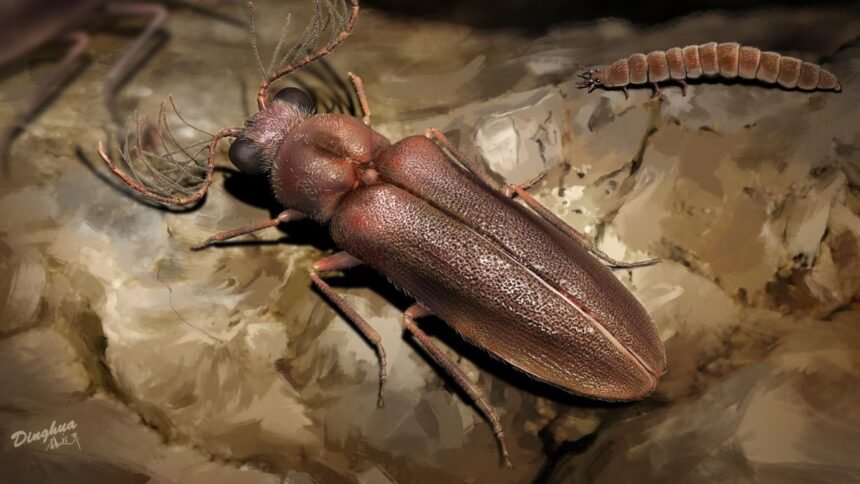A 99-million-year-old beetle shines light on the evolution of glowing insects

Bioluminescent insects have long fascinated scientists, but little is known about how these animals got their light abilities. A 99-million-year-old beetle recently discovered by researchers, however, unlocks a piece of the evolutionary puzzle, according to a study published in The Royal Society journal.
The beetle, known by its Latin name Cretophengodes, was found fossilized in a piece of amber in northern Myanmar. The tropical location was full of insect life during the Cretaceous period, said study author Chenyang Cai, an associate professor at Nanjing Institute of Geology and Palaeontology at the Chinese Academy of Sciences in Beijing.
“We even have records of dinosaur remains from the same amber deposit that Cretophengodes was found in,” Cai said.
Each of the insect’s antennae had 12 segments branching off it, but what caught Cai’s eye was the light organ nestled into its abdomen. That organ gave the beetle bioluminescence, the ability for a living organism to produce its own light, Cai said.
Modern-day insects such as fireflies and glowworms are part of Elateroidea, the same superfamily animal classification that the beetle is from.
Cretophengodes is one of the oldest bioluminescent beetles to be found, so it gives researchers insight into the early evolutionary building blocks of this superfamily.
It’s not known why the beetles were bioluminescent, but based on relatives, Cai speculated that the function was used as a defense mechanism. Today, some young beetle larvae in the same superfamily have used light to protect themselves from predators, and adults have been known to use their light abilities to attract mates.
Modern-day fireflies produce light through a chemical reaction in their body. When a series of ingredients including the compound luciferin and the enzyme luciferase interact with oxygen, it produces a flickering light.
Study author Erik Tihelka, a paleobiology student at the School of Earth Sciences at the University of Bristol in the United Kingdom, said he wants to spend time researching what predators drove the evolution of bioluminescence in Cretaceous beetles. His hypotheses have included birdlike dinosaurs and digging animals that fed on the forest floor.
“I find it fascinating that we may owe the glow of fireflies to an ancient predator-prey arms race with the dinosaurs,” Tihelka said.